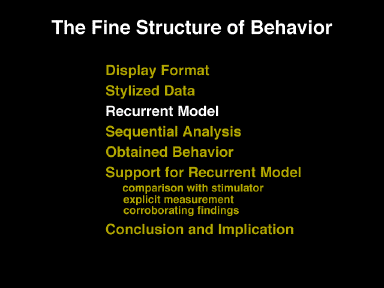 Slide 4-14
Slide 4-14

 Slide 4-14
Slide 4-14
We developed a model which could account for these findings. We call it a recurrent model.
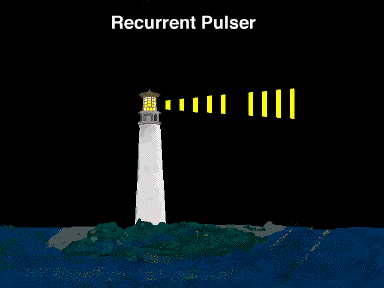 Slide 4-15
Slide 4-15
A lighthouse is a recurrent pulser. It pulses at a constant rate. The spacing between each flash of light is the same. If a person happened to stand in the way of the light during one or more pulses, then the spacing across the missed flashes would be an integer multiple of the base pulse rate. If we call the above the typical spacing unit, then the hole is of size 2, indicating 1 missed pulse.
A pendulum is also a recurrent pulser, the difference in the metaphors is that the pulse rate of a lighthouse is implied to be immutable whereas a pendulum's pulse rate is adjustable by adjusting the length of the arm. Whether pecking is more like a lighthouse or a pendulum is not yet clear
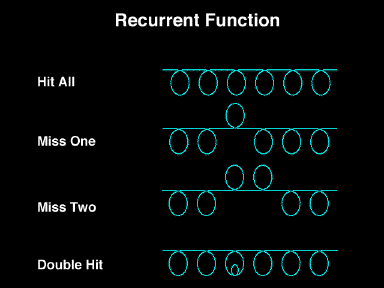 Slide 4-16
Slide 4-16
A mechanical metaphor is also available. If a helix (like a phone cord) is stretched out, the bottom of its loops are equally spaced. If a kink develops such that one or more loops twist in the opposite direction, then the spacing across those missed loops is an integer multiple of the basic coil spacing. This particular metaphor is interesting, in that it provides for a double hit without altering the basic spacing. The example also bridges to representations used to study nonlinear dynamic systems or chaotic systems.
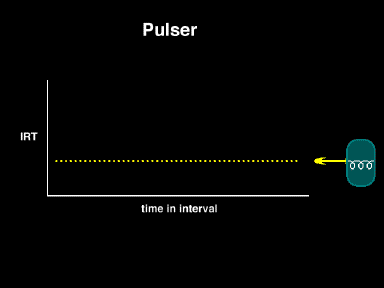 Slide 4-17
Slide 4-17
We generated a simulator to explore potential mechanisms which could explain the nature of the output of a pigeon on a fixed-interfood interval. The first level was a simple pulser which output "pecks" at a constant rate throughout the interval.
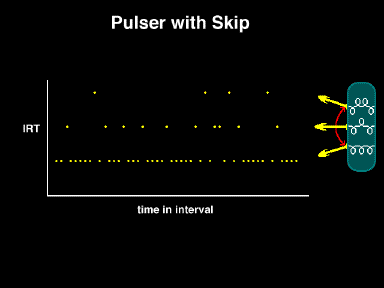 Slide 4-18
Slide 4-18
The second stage was to add a factor which caused a miss on 30% of the occasions that a pulse (or peck) would have occurred.
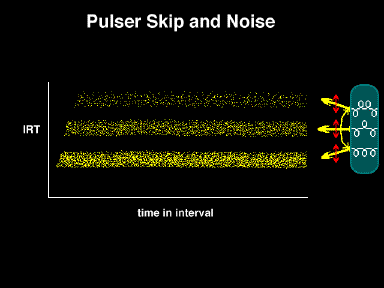 Slide 4-19
Slide 4-19
Gaussian noise was then added to the basic pulse generator, so that the pulse spacing randomly varied around its base frequency.
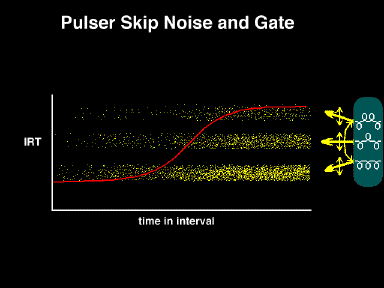 Slide 4-20
Slide 4-20
Finally, an ogive (or a summated gaussian distribution) was used to determine the onset of pecking within each trial (this is the function identified in the last segment of the last chapter.
As can be seen, this very simple model captures the major features of the actual behavior obtained under a fixed-interval schedule